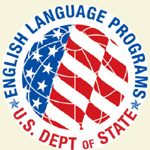Lesson Plan Title: Democracy and elections
Skills Covered: Reading, writing, speaking and listening skills.
General Goal(s): General Goal(s): The students will develop reading, speaking, listening and writing skills necessary for recognition and interpretation, analysis and evaluation of the work of art.
Specific Objectives:
• deepen students’ knowledge of works of painting and certain period of arts / history
• study vocabulary units to be used in conversation about this type of art
• learn or practice how to make definitions
• expand students’ knowledge of the system of presidential elections in the USA, Russia / or their native country
• develop students’ ability to use active vocabulary while writing a formal (official) letter
• provoke critical thinking of students by making comparison of different election procedures
• take part in the discussion on the given topic / on the painting under discussion
Materials / Visual Aids: Projector, computer for presenting the reproduction of “The Country Election” (1852) by George Caleb Bingham or slide projector and the slide with the reproduction of “The Country Election” by George Caleb Bingham.
Glossary
Words are listed in the order in which they appear in the text
raucous (adj qualit) – noisy, loud and rough
enactment (n uncount, count) – passing, the process in the parliament that makes a law official
(social) stratum (n count) – echelon, class of society
cluster(s) (n count) – number of things or group of people gathered close together
sprawled (adj classif) – stretched, sitting or lying with legs and arms spread out
ominously (adv) – in a menacing or sinister manner
indictment (n count) – accusation, an official charge made to a person
• Warm-up activity (Class Discussion, 10 minutes). Discuss the following questions:
- What do you know about the presidential elections in the USA and in your country?
- Have you ever taken part in the elections?
- How often are the elections held in our country / in the USA?
- From what age can people vote in your country?
- What were the last elections you, your friends or your parents took part in?
Activity 1 (5 minutes). Explain the meaning of the following words:
electorate term to vote
suffrage party deputy
elector voter plurality
Follow-up Activity (15 minutes): For each vocabulary unit describe a situation connected with presidential elections which took place in your country or abroad(no more than 3-4 sentences).
Activity 2 (written task, 10 minutes). Put the following words and expressions into three groups:
Group 1: elections in Russia
Group 2: elections in the USA
Group 3: elections in other country / countries
to be elected independently of legislature, plurality vote, majority-decision rule, electoral college, to win a majority, the plurality system, to receive the majority of the votes in the first cast, round of balloting, to avoid a runoff with a minimum of 45 percent of the vote, to proceed to the second round, principals of democracy, to gain a plurality of the vote, a minority of the popular vote, to win fewer popular votes, electoral districts, to consider the constituency, the method of counting, to adopt single-seat constituencies, multimember constituency, counting votes, single-member district, majority-vote area, a loose coalition, problems of apportionment, multiparty elections, gerrymandering, direct the electoral choice.
Activity 3. Make use of the word combinations mentioned above (See Activity 2) and describe the procedure of presidential elections of:
a) Dmitry Medvedev;
b) Barack O’Bama;
c) the president of another country (e.g. Nothern Ireland, Mexico, Gana, Peru, Nicaragua, France, etc).
Follow-up Activity (25 minutes): The students should be divided into groups of three or four and talk for about 5 minutes about the advantages of electoral system of a certain country. Their opponents (the rest of the students) should focus their attention on the disadvantages of electoral procedure in the country under discussion.
Activity 4 (Class Discussion, 5 minutes): Look at the picture “The Country Election” (1852) by George Caleb Bingham and think how the procedure of elections have been chosen since the time the painting was created. Discuss it with your partner.
EXTENSION (10 minutes): Imagine that you have an opportunity to write an official letter to the President of Russia / the USA. Tell the president what you would like to choose in the system of presidential elections in your country. |

